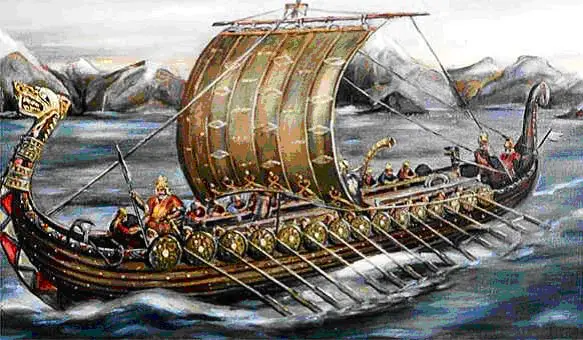Ireland from Earliest Settlements through the First Millennium
The first people to have lived in what is now Ireland are thought to have arrived there after 8000 B.C. As did other people at that time, they lived primarily on or near coasts or waterways, using the water to survive, both as a source of drinking water and as a source of food, in the form of fish and plants. These people would have also hunted birds and land-based animals. 
People in Ireland started farming about the same time that people in the British Isles did, in the 4th Century B.C. It was the Stone Age inhabitants of Ireland who first left monuments, such as cairns and dolmens. One of the most well-known of these stone monuments is Newgrange, in what is now County Meath. Constructed about 3200 B.C., it is a very large circular stone structure that appears to have been built in such a way as to take advantage of sunlight on the solstice. Ireland had its own Bronze Age, which was supplanted by the iron brought by the Celts, who arrived about 500 B.C. As in Britain, the Celts proved adept at conquering and forcing those conquered to adapt to Celtic ways. Part of the Celtic legacy, courtesy of the Gaels, was a division of the island into kingdoms. As was the case with most peoples during the 3rd Century B.C., when the Gaels arrived, and in subsequent years, kingdoms fought one another from time to time; in Ireland, a high king ruled, with a seat at Tara, and the kings of the various kingdoms paid homage to the high king. Some sources say that the tuatha, as the petty kingdoms were known, numbered more than 100. They shared a common language and a common system of laws, known as Brehon law. 
Irish civilization was able to advance in this way because, unlike in the British Isles, the Romans never came calling with an army of conquest. The famed Greek geographer/scientist Claudius Ptolemy named these tribes in his Geographia, along with, of course, a description of the landscape. Roman sources did refer to the Irish, confusingly, as Scotia; references to these people are in Romano-British accounts of the 4th Century "Barbarian Conspiracy." One well-known export to western Scotland at this time was that of the Dál Riata. 
As Christianity spread through England, so it came to Ireland, first in the teachings of Palladius and then from the famous Patrick, who spent 18 years in Ireland and, so stories say, performed miracles. He is also said to have driven all the snakes from Ireland. One thing that is known for sure is that Patrick made use of the shamrock in his religious teachings, to illustrate the idea of the Christian Trinity ("Father, Son, and Holy Ghost/Spirit"). The three-leaf shamrock would have been familiar to native Irish people, who saw the shamrock in a similar way with regard to their three sacred goddesses. Christianity flourished in Ireland after Patrick. Columba traveled across the water to the east and founded a monastery at Iona. Brendan founded a local center of worship at Clonfert. Columbanus was prolific in founding monasteries in East Anglia, Gaul, and elsewhere in continental Europe. Irish monks (thanks to Patrick's introduction of the Roman alphabet) played a large part in keeping alive the Greek and Roman traditions during the Dark Ages. These monks were particularly skilled at creating illuminated manuscripts, incorporating Christian stories and calligraphy. Possibly the most famous of these was the Book of Kells, created about A.D. 800.  It was just before this, in 795, that the first Viking raiders appeared in Ireland. Rathlin Island was among the first to bear the brunt of Viking raids. It was a reverse of what had been happening, which was Irish pirates conducting raids along the western coast of Britain. As in England, the Vikings kept coming, with the famous Olaf the White landing in Dublin Bay in 852. Dublin became the center of a Norse kingdom in Ireland. The Vikings spread out, taking Waterford in 914 and Limerick in 920, taking and then losing and then taking again Cork, and founding Wexford. They set up market towns and promoted international trade. They intermarried with the locals. They minted coins as early as 997. The Irish resisted as well as they could, then fought back. Brian Boru, in 1002 named high king, led a large force to victory at Clontarf on April 23, 1014. It wasn't the end of the Vikings in Ireland, but it was the beginning of the end. |
|
Social Studies for Kids
copyright 2002–2024
David White





